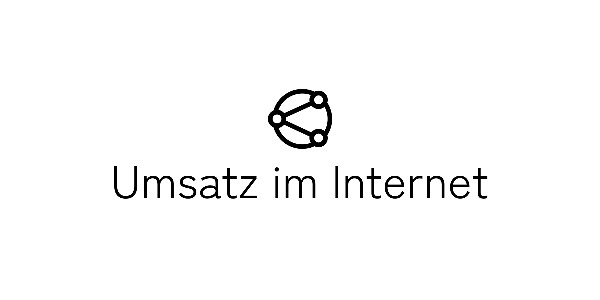Introduction
In the fast-paced field of digital marketing, it's crucial to stay one step ahead. While traditional search engine optimization (SEO) has its merits, they often reach their limits when it comes to efficiency and scalability. That's where AI-driven content optimization tools come in, offering a smarter, more efficient way to improve your website's SEO. In this comprehensive guide, we'll explore what these tools offer, how they work, and why they could be the missing piece of the puzzle in your digital marketing strategy.
Detailed study of the key functions
Semantic term target
What it is:
Semantic term targeting goes beyond simple keyword stuffing. It uses Natural Language Processing (NLP) to understand the context and semantics of your content.
How it works:
The tool scans your content and identifies core topics and themes. It then suggests related terms and phrases that can make your content more comprehensive and SEO-friendly.
Advantages:
- Contextual relevance: Ensures that your content is contextually relevant to the target keywords.
- Increased visibility: Increases the chances that your content will be ranked for a variety of related searches.
On-page optimization
What it is:
This feature focuses on optimizing all on-page elements that affect SEO, from meta descriptions and title tags to header tags and image alt texts.
How it works:
The tool analyzes each on-page element and offers recommendations based on best SEO practices.
Advantages:
- Holistic optimization: Provides a complete solution for all on-page SEO needs.
- User experience: Improved on-page elements can lead to a better user experience, which indirectly boosts SEO.
Plagiarism check
What it is:
Duplicate content can significantly affect the SEO of your website. This feature scans the web to make sure your content is unique.
How it works:
The tool compares your content with an extensive database of web content to identify possible duplicates.
Advantages:
- Penalty avoidance: Helps you avoid search engine penalties related to duplicate content.
- Maintaining integrity: Ensures the originality and integrity of your content.
Team roles and access management
What it is:
This feature allows multiple team members to collaborate on the same project, each with their own permission set.
How it works:
You can assign different roles such as "Editor", "SEO Analyst" and "Content Creator", each with specific levels of access to the tool's features.
Advantages:
- Simplified workflow: Facilitates an organized and efficient workflow.
- AccountabilityRole-based access ensures that each team member is responsible for his or her tasks.
Content check
What it is:
This feature performs a thorough audit of your existing content and identifies areas for improvement.
How it works:
The tool scans your website and provides a detailed report highlighting the strengths and weaknesses of your content strategy.
Advantages:
- Actionable insights: Provides actionable recommendations to improve your content.
- Performance tracking: Allows you to track the performance of your content over time to understand the ROI of your SEO efforts.
Advantages over traditional SEO: a detailed study
1. efficiency
Traditional SEO:
Traditional SEO methods often require manual keyword research, competitive analysis and on-page optimization. This can be a time-consuming process that requires constant monitoring and adjustments.
AI-driven tools:
These tools automate many of these processes, from keyword analysis to on-page optimization, saving valuable time.
Most important finding:
Automation allows you to focus on other aspects of your digital marketing strategy, making your overall approach more efficient.
2. data-driven insights
Traditional SEO:
Traditional methods often rely on intuition and experience, which are valuable but do not offer the precision of data-driven strategies.
AI-driven tools:
These tools provide data-driven recommendations based on comprehensive analytics, making your SEO
-strategy becomes more reliable and effective.
Most important finding:
Data-driven insights enable more targeted and effective SEO strategies and reduce optimization guesswork.
3. scalability
Traditional SEO:
As your website grows, managing SEO manually becomes increasingly challenging. The complexity of tracking multiple keywords, backlinks, and on-page elements can be overwhelming.
AI-driven tools:
These tools are designed to scale easily with your business. They can manage large amounts of data and multiple projects simultaneously, ensuring constant optimization.
Most important finding:
AI-powered tools offer a scalable solution that can adapt to the growing needs of your business, making them a long-term asset to your SEO strategy.
4. content quality
Traditional SEO:
While traditional SEO focuses on optimization for search engines, the importance of content quality from a user perspective is often overlooked.
AI-driven tools:
These tools not only optimize for search engines, but also improve the readability and overall quality of your content, making it more appealing to users.
Most important finding:
Improved content quality leads to better user engagement, which in turn can positively impact your search engine rankings.
Summary
AI-driven content optimization tools aren't just a trend; they're the future of SEO. They offer a smarter, more efficient, and scalable way to optimize your website's content. With features like semantic term targeting, on-page optimization, and plagiarism checking, these tools offer a comprehensive solution for all your SEO needs. By understanding their capabilities and how they compare to traditional SEO methods, you can make an informed decision to improve your digital marketing strategy.




